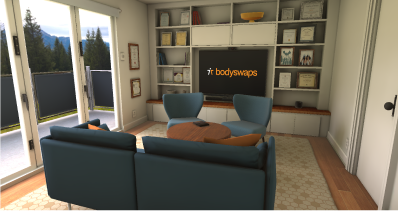Negotiation and Conflict Management: Laying the Groundwork
Tutor Notes
Inexperienced negotiators often focus so much on trying to ‘win’ the negotiation from the outset, that they risk losing out in the long game. In reality, successful negotiations rely on mutual respect and trust between both parties. Paying attention to the quality of relationships you develop with others can make all the difference.
This immersive training module explores how taking the time to create rapport and make a positive impression can achieve better outcomes. Coached activities include making good small talk and rapport-building to help forge and nurture connections with others.
About this resource
Key learner outcome and goals
Learning Outcome
Build positive relationships with negotiation partners to help pave the way for better outcomes.
Learning Goals
- Reflect on how you approach negotiations
- Make effective small talk
- Build rapport and trust, and manage the impression you make
- Use active listening to understand the other person better
A word about terminology
As a medium, Virtual Reality is not best suited to didactic teaching methods.
However, our intention is that all Bodyswaps modules follow a student-centred constructivist pedagogy. This means creating rich experiences in which learners can explore key concepts and ideas and reach their own conclusions.
This is why our documents speak in terms of learning goals and outcomes, rather than measurable ‘learning objectives’ (a la Bloom’s Taxonomy) per se.
Module structure
The complete journey takes the learner through 4 interactive topics, led by virtual coaches Zak and Amira, as well as ancillary activities such as induction, self-reflection, and the exit survey.
It is a linear experience, meaning the learner will be guided step by step through all the activities by the coaches.
We recommend that learners fully interact with each activity to get the full benefit.
It is estimated that each topic will take the learner approximately 5-10 minutes to complete, although completion times vary depending on whether the learner chooses to repeat topics to explore different options (encouraged) or fine-tune their freeform responses.
Learner Journey
.svg)
.svg)
interaction
.svg)
observation
interaction
.svg)
conversation
interaction
.svg)
conversation
interaction
.svg)
.svg)
.svg)
Characters
Virtual mentor


Zak
Virtual mentor
Michelle Boothe
Founder of Eco Adventures
Dan Munroe
Recruiter at GreensleevesLearning Environments

Tutor Room
Coffee shop
Rooftop
Purpose
Familiarise learners with the controls and navigation
Location
Characters
N/A
Duration
01:00
The first time learners use Bodyswaps, this onboarding sequence familiarises them with the features of the app, takes them through an avatar selection and embodiment activity, and prepares them for the experience to come.
In the induction, learners will:
- Find out how this training is different from the rest
- Select their avatar
- Discover their virtual journal
- Learn how to navigate and use the tools and settings
Purpose
Introduce the module and reflect on current confidence levels before beginning the activities
Location
Characters
Duration
Zak and Amira begin the module by chatting about how negotiations with one another usually go quite well, because they have a good connection. It’s much harder to negotiate with someone when you don’t have that rapport to begin with. But they’re going to help prepare the learner for laying that positive groundwork with others.
After setting out the goals for the module, the coaches then invite the learner to complete a short likert-style self-reflection survey, to indicate how confident they feel about the following key learning points:
- Making effective small talk
- Building rapport and trust
- Managing the impression they make
- Using active listening to understand the other person better
These self-reflection questions will be repeated in the debrief at the end, to assess how the learner’s confidence levels have changed.
Note: If you wish to receive data about how the learner’s confidence levels have changed as a consequence of the training, it’s important that they complete this introduction and the debrief at the end.
Purpose
Help learners to reflect on their personal approach to negotiations
Location
Characters
Zak and Amira
Journal
Duration
Zak opens the topic by wondering why he can so easily negotiate with his sister, but discussing rent with his landlady fills him with anxiety. Both situations potentially involve conflict, yet he feels very differently about them.
Amira reveals it’s because of our 'mental models' – our ingrained assumptions about how the world works. They affect our perception of situations, including negotiations.
To get the learner thinking about their own mental models, and to help activate their working memory for the learning to come, this diagnostic activity invites them to reflect on how they perceive and approach negotiations.
Zak and Amira present them with different examples of negotiation situations, and the learner chooses what they might say, or how they feel, from a series of three-option multiple choice questions. The responses reflect three different approaches:
- Concerned with own outcomes
- Desires outcomes that satisfy everyone
- Conflict avoidant
An on-screen visual reveals which approach each chosen response reflects. Then, once the learner has responded to all the scenarios, Zak and Amira provide feedback based on which mental model their answers were most closely aligned with.
For example, if they were mostly concerned with their own outcomes, Amira and Zak gently explain how this approach is often counterproductive. A more flexible approach that seeks mutual benefit will lead to better outcomes.
Purpose
Identify good and bad elements of small talk
Location
Tutor room, coffee shop
Characters
Zak and Amira, Michelle and Dan
Journal
Duration
When relationship-building with people we don’t yet know, the first step is to get comfortable with starting a conversation and making small talk.
So, in this dual observation activity, the learner sits in on a conversation between Dan Munro and Michelle Boothe to watch how Dan makes effective, or not so effective, small talk. Dan, a recruiter at Greensleeves, has arranged to have a casual coffee chat with Michelle, founder of travel company Eco Adventures, to do some relationship-building with her.
While observing their chat, the learner’s goal is to spot examples of Dan making good small talk, which progresses his connection with Michelle, as well as bad small talk, which stops the exchange in its tracks or misses rapport-building opportunities.
Visual feedback is provided in real time to indicate if a learner has correctly identified a behaviour. Summary feedback is also supplied at the end of the conversation, with a panel of buttons indicating which instances of good and bad small talk they spotted.
If the learner selects one of the buttons, it will rewind the conversation to the corresponding instance for the learner to rewatch it. Then, text feedback explains why that example of small talk laid great groundwork, or created a rift between Dan and Michelle.
Purpose
Develop rapport with someone new and influence how they perceive you
Location
Tutor room, coffee shop
Characters
Zak and Amira, Michelle
Journal
Duration
Back in the tutor room, Zak reveals to the learner that it’s now their turn to chat with Michelle, to practise using small talk and keep the rapport building going with her.
Zak and Amira share some quick pieces of advice for building rapport, such as using empathy and effective, open questions, then the learner heads back over to the coffee shop to pick up where Dan left off.
In this scaffolded conversation activity, the learner chooses what to say from three given options, each of which elicits a different response from Michelle. A pop-up also provides additional information about the impact of what they said.
By selecting the right responses at each stage in the conversation, the learner keeps developing a connection with Michelle, makes a positive impression and, importantly, starts to grow trust.
No branching or complex evaluation occurs across a scaffolded conversation, and whilst the learner must choose the ‘right’ approach to progress, it's also a chance to run with their curiosity and try out different responses. They can still choose the ‘wrong’ ones and get a taster of the various turns their exchange with Michelle could take.
Purpose
Practise using active listening skills
Location
Tutor room, rooftop
Characters
Zak and Amira, Michelle
Journal
Duration
The previous conversation wraps up with Michelle inviting the learner to meet her later for another chat. So, in this topic, it’s time for the learner to join her at the Sustainable Travel Convention and keep the relationship-building going – this time by being an active listener.
In this freeform conversation activity, the learner’s goal is to respond to Michelle in a way that shows they were actively listening to what she said.
By doing so, Michelle feels more open to sharing her hopes and wants for Eco Adventures, which would make future discussions and negotiations much more productive. In contrast, if the learner doesn’t pay attention and respond appropriately to Michelle’s key messages, the conversation starts to flounder.
As the learner responds to Michelle, speaking aloud in their own words, AI analytics look for keywords that suggest good or poor active listening. For example, good active listening focuses on validating Michelle’s feelings and reflecting back, such as “tell me more”, “If I’m hearing correctly”, and “I can see why”. Phrases such as “you’re wrong”, “deal”, “my”, and “money” suggest poor active listening and a self-focused approach.
The learner also receives some helpful feedback on their use of eye contact and speaking pace for communicating clearly and engagingly, as well as some closing pointers from Zak and Amira that reflect how well the learner performed the task.
Purpose
Debrief the learner upon completion of the training and prompt self-reflection
Location
Tutor room
Characters
Zak and Amira
Journal
N/A
Duration
Zak and Amira congratulate the learner for completing their journey through the module. They wrap up by offering the learner a final reminder that successful negotiations rely on mutual respect and trust, and good small talk and rapport-building will help them forge and nurture connections with others.
Now, the learner is invited to take the same likert-style survey from the beginning, to encourage them to reflect and self-report on their confidence levels following completion of the training.
The questions relate to how confident they now feel about the key learning points:
- Making effective small talk
- Building rapport and trust
- Managing the impression they make
- Using active listening to understand the other person better
Purpose
Assess the effectiveness of the training itself
Location
N/A
Characters
N/A
Journal
N/A
Duration
Before the learner leaves the module, they are asked to complete a short survey about their experience.
This survey is not compulsory, but the data helps us to assess the effectiveness of our product and identify any areas that need improvement. Clients also find it beneficial when assessing ROI.
They are asked to mark whether they agree or disagree with the following statements, on a 10 point scale:
- I would recommend this experience to others
- The experience helped me identify elements I could improve upon
- I now have a better understanding of how to build positive relationships before a negotiation begins
